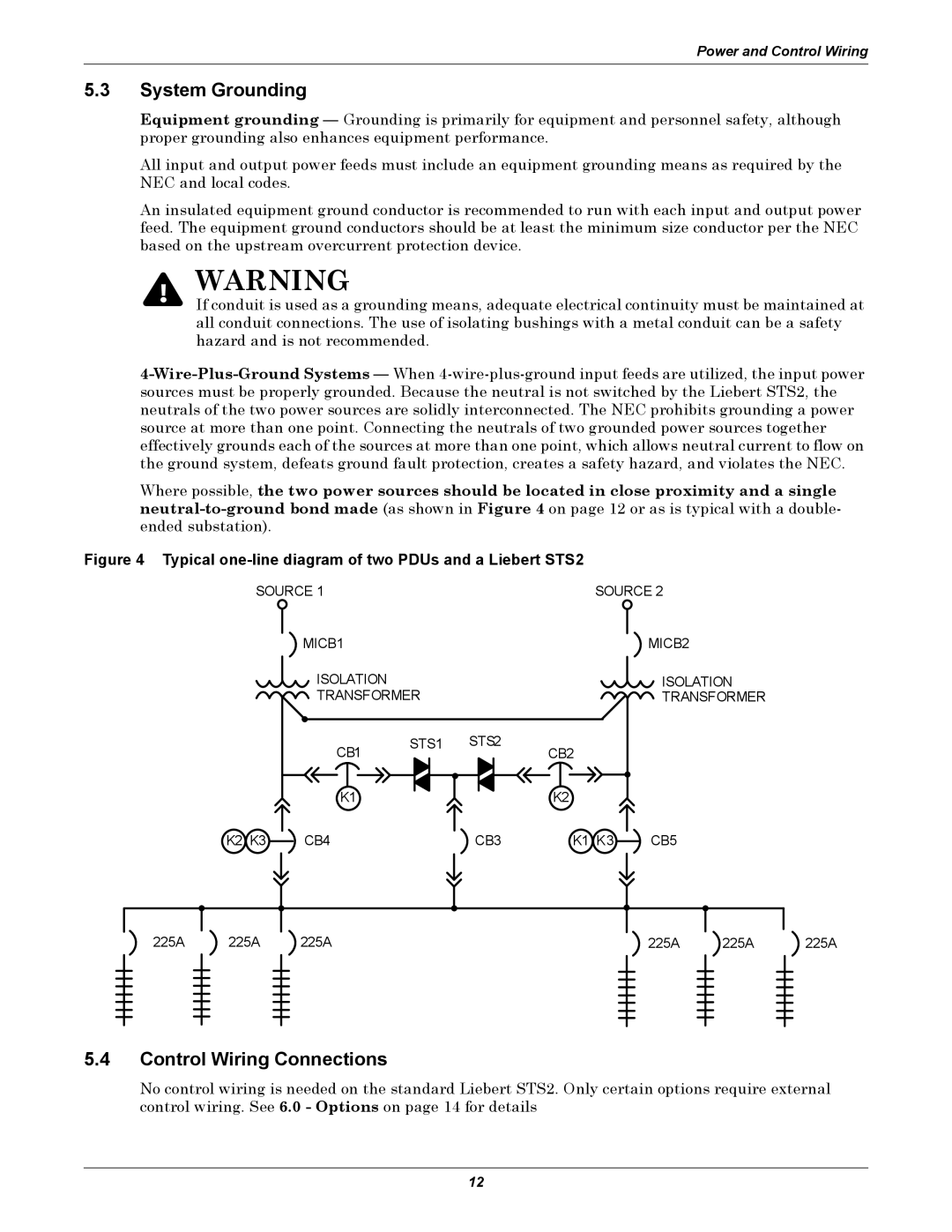
Power and Control Wiring
5.3System Grounding
Equipment grounding — Grounding is primarily for equipment and personnel safety, although proper grounding also enhances equipment performance.
All input and output power feeds must include an equipment grounding means as required by the NEC and local codes.
An insulated equipment ground conductor is recommended to run with each input and output power feed. The equipment ground conductors should be at least the minimum size conductor per the NEC based on the upstream overcurrent protection device.
! WARNING
If conduit is used as a grounding means, adequate electrical continuity must be maintained at all conduit connections. The use of isolating bushings with a metal conduit can be a safety hazard and is not recommended.
Where possible, the two power sources should be located in close proximity and a single
Figure 4 Typical one-line diagram of two PDUs and a Liebert STS2
SOURCE 1 |
|
| SOURCE 2 | ||
| MICB1 |
|
|
| MICB2 |
| ISOLATION |
|
|
| ISOLATION |
| TRANSFORMER |
|
| TRANSFORMER | |
| CB1 | STS1 | STS2 | CB2 |
|
|
|
|
| ||
| K1 |
|
| K2 |
|
K2 K3 | CB4 |
| CB3 | K1 K3 | CB5 |
225A | 225A | 225A | 225A | 225A | 225A |
5.4Control Wiring Connections
No control wiring is needed on the standard Liebert STS2. Only certain options require external control wiring. See 6.0 - Options on page 14 for details
12
